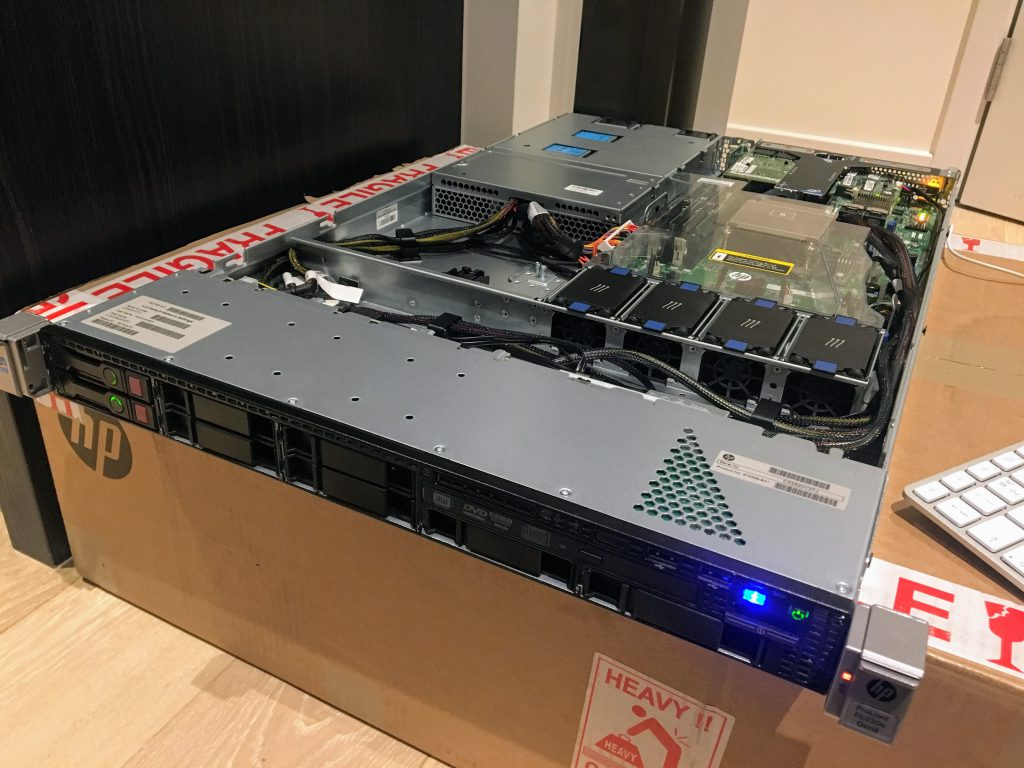This is your sysadmin speaking: please expect some turbulence.
A few months back I blogged about my HP DL320 Gen8’s (in)compatibility with the outside world, and someone suggested me to solve the problem by replacing the P420i RAID controller with an LSI-something which would ensure wider flexibility.
Others were suggesting to replace (again) the hard drives instead, and someone was even pushing to swap this “hobby” with something healthier and go cloud instead*.
For the first time in my life I decided to listen to friends, so I replaced the RAID controller with an LSI 9300i HBA (I’m using mdraid anyway)…
…well, not really: I also replaced the chassis, motherboard, CPU, RAM banks, fans, PSUs and drive caddies.
Meet “ZA Rev2″**:
This is how it evolved:
- HP -> Supermicro (yay!)
- Xeon E3-1240 v2 -> Xeon E3-1240 v6
- 4×8 GB DDR3 RAM -> 2×16 GB DDR4 RAM (2 slots free for future upgrades)
- HP P420i -> LSI-9300i
- 2x SSD Samsung 850 EVO 250 GB -> no change
- 2x HGST SATA 7.2k 1 TB -> no change
D-Day for replacement is April 18th (taking a day off from my job to go and do the same things, just for hobby, feels really weird, yes), with a 6 AM wake up call, flight to AMS, 8/10 hours to do everything and a flight back to LON (LTN to be precise, because I didn’t double check before hitting “Buy”).
Now to the sad part: there is no (easy) way to just move the drives to the new server and have everything working, so I have to reinstall it from the ground up. This means my stuff (including this blog, because loose-coupling is a thing but I decided to run its DB and NFS from another country… …for some reason) will be down (or badly broken) during that time window and possibly longer, depending how much I manage to do while I’m onsite.
The timing couldn’t be better for a clean start, as in the last few months I had been considering the option to move away (escape) from Proxmox (which, as an example, is so flexible that its management port number is hardcoded everywhere and can’t be changed) to something else, most likely oVirt or OpenNebula. Haven’t taken a decision yet, but I’ve really fallen in love with the latter: it’s perfect for the cloud-native minds and runs on Debian, whereas oVirt would force me to move to the RPM side of the world.
Deeply apologise in advance for my rants on Twitter while I try to accomplish this mission. Stay tuned.
Giorgio
* I.AM.100%.CLOUD. There are two things you can’t (yet) do in the cloud: physical backup of your assets that live in the cloud and testing stuff which requires VT extensions. This is what I’m doing here: ZA is my bare-metal lab.
** this is not ZA Rev2. It was supposed to be, but it came in with a faulty backplane so I pushed for it to be entirely replaced. I don’t have a picture of the new one with me at the time of writing but… yeah, it looks exactly the same (with better cable management).

